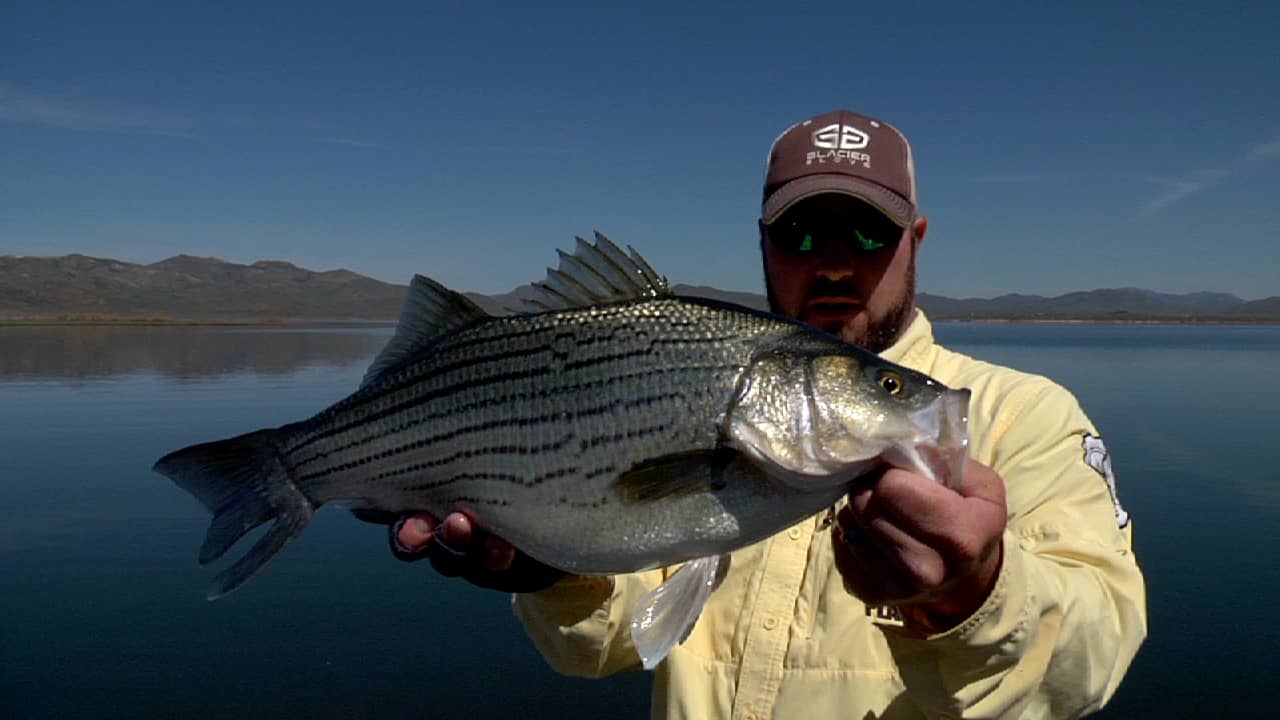Wiper Bass on the Fly at Southfork Reservoir, Nevada
Wild Fish Wild Places 06.01.12

The wiper bass, a hybrid cross between a white bass and a striped bass, is making its mark across the country as one of the most hearty and hard-fighting game fish around. As the Wild Fish Wild Places crew made their way through the high desert toward our base for the week in Elko, Nevada we had little idea of what great fishing awaited us. Our objectives for this filming trip were to catch these elusive, marauding predators in two different reservoirs, Southfork and Wildhorse.
Our first morning found us talking with a local wiper fisherman learning what the wipers were doing most recently and which type of flies and line we should use. Wiper angling is a finicky and time-sensitive type of fishing, if you aren’t in the exact spot using the right gear it can make for a long day. We felt we had the right setup and moved out on the water to chase these elusive fish. The fish were staging in about 10-14 feet of water using submerged trees to ambush prey. It was approximately 8:30AM and the fish were starting to get active. As we started to present our chartreuse clousers around the trees we began seeing some action, but only on one particular setup. The wiper fishing was really good for the guy who was using the #4 uniform sink line and not so hot for the fast sinking tip. The fish were keyed in on the more horizontal movement and not so much on the jigging movement demonstrated by the fast sink tip, striper line.
As the next three days progressed we had some amazing wiper fishing, with 90 percent of the fish coming on the uniform sink line. We experimented with different chartreuse fly patterns that we would tie in the evening, and they all caught fish. We fished different parts of the lake that were similar to where we were catching fish and none produced wipers other than the half square mile of water we found them in the first day. The wiper fishing was great at Southfork Reservoir, but paying attention to subtle differences and figuring out the different patterns was the key to being successful.
The key to being successful for wipers; many small differences added up to catch fish on this trip and we would like to share our techniques.
- Adamsbuilt 8wt flyrods were key for throwing big heavy flies and line
- Chartreuse flies with flash and marabou for extra movement in the water seemed to trigger the most bites
- Stripping at a very fast pace with a strip-strip pause strip-strip pause was very important
- 10-14 feet of water with maximum cover around the south end of the lake
- Most importantly a #4 uniform sink fly line to get that fly in the strike zone and moving horizontal in their face
These few small things were instrumental in being successful for catching wipers at Southfork Reservoir. Next stop Wildhorse!

